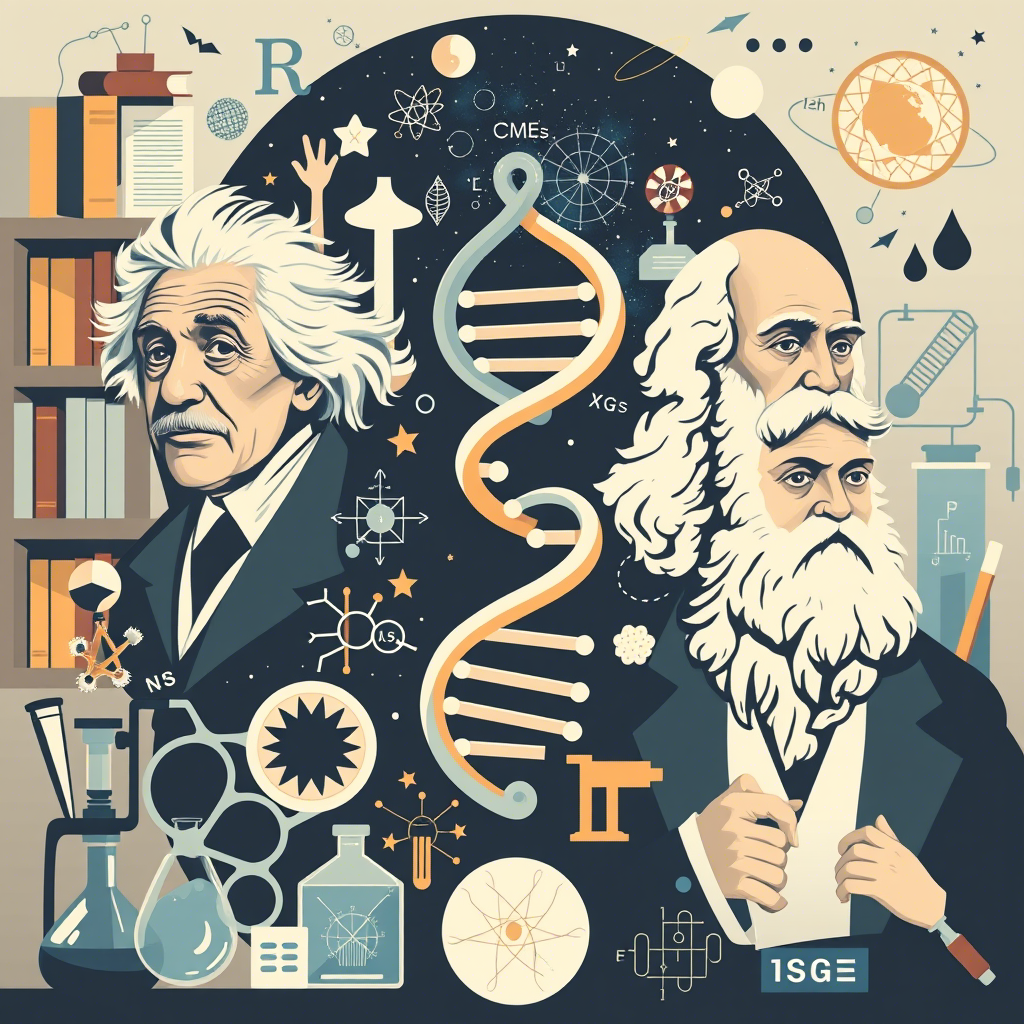Introduction
Science, as a systematic and logical approach to discovering how the world works, fundamentally hinges on the identification of patterns and regularities. At its core, science is the process of discerning identity amidst diversity. This essay explores the multifaceted nature of this discovery, delving into the various ways in which identity—be it sameness, similarity, likeness, resemblance, analogy, equivalence, or equality—is identified and utilized in scientific inquiry. Through a detailed examination of historical and contemporary examples, this essay will illustrate how the recognition of identity is essential to the scientific method and the advancement of human knowledge.
1. The Concept of Identity in Science

Identity in science can be understood as the recognition of a fundamental sameness or similarity between two or more phenomena, despite their apparent differences. This concept is crucial because it allows scientists to generalize findings, make predictions, and develop theories that can explain a wide range of observations. For instance, the laws of physics are based on the assumption that certain principles (like gravity) operate consistently across different contexts, allowing for the prediction of outcomes in new situations.
2. Historical Examples of Identifying Identity
2.1 Newton’s Laws of Motion
One of the most profound examples of identifying identity in science is Sir Isaac Newton’s formulation of the laws of motion. Newton observed that the same principles governing the fall of an apple also govern the motion of celestial bodies. By recognizing the identity between terrestrial and celestial mechanics, Newton unified the study of physics and laid the foundation for classical mechanics. This recognition of identity allowed him to formulate universal laws that could be applied to a vast array of phenomena.
2.2 Darwin’s Theory of Evolution

Charles Darwin’s theory of evolution by natural selection is another seminal example. Darwin observed that species exhibit variations, but he also recognized that these variations could be traced back to common ancestors. By identifying the identity of genetic traits across different species, Darwin was able to propose a mechanism by which species evolve over time. This recognition of identity in biological diversity led to a revolutionary understanding of the natural world.
3. The Role of Identity in Scientific Method
The scientific method is a systematic process that involves observation, hypothesis formation, experimentation, and theory development. Each step in this process relies on the identification of identity in some form:
3.1 Observation
Observation is the first step in the scientific method, where scientists gather data about the natural world. This data often reveals patterns and regularities that suggest underlying identities. For example, astronomers observe the periodicity of planetary orbits, which suggests a common gravitational force acting on all celestial bodies.
3.2 Hypothesis Formation

A hypothesis is a tentative explanation for an observed phenomenon. Formulating a hypothesis often involves identifying a potential identity or similarity between different observations. For instance, the hypothesis that “all metals conduct electricity” is based on the observation that many metals share this property.
3.3 Experimentation
Experiments are designed to test hypotheses by manipulating variables and observing the outcomes. The success of an experiment often depends on the ability to identify and control for variables that are identical or similar in nature. For example, in a controlled experiment to test the effect of a drug, the control group and the experimental group must be as identical as possible in all respects except for the administration of the drug.
3.4 Theory Development
Theories are comprehensive explanations that integrate multiple hypotheses and observations. The development of a theory often involves identifying deeper identities or unifying principles that explain a wide range of phenomena. For example, Einstein’s theory of relativity unified the concepts of space and time, revealing a deeper identity in the fabric of the universe.
4. Identity in Different Scientific Disciplines
4.1 Physics
In physics, the identification of identity is crucial for formulating laws and principles that apply universally. For example, the conservation of energy principle states that energy cannot be created or destroyed, only transformed from one form to another. This principle is based on the identity of energy in different forms (kinetic, potential, thermal, etc.).
4.2 Chemistry
Chemistry relies heavily on the identification of identity in molecular structures and reactions. The periodic table of elements, for instance, is organized based on the identity of atomic properties, such as atomic number and electron configuration. This organization allows chemists to predict the behavior of elements and compounds.
4.3 Biology
In biology, the identification of identity is essential for understanding the relationships between different organisms. Taxonomy, the classification of living things, is based on the identification of shared characteristics and evolutionary relationships. This recognition of identity helps biologists understand the diversity of life and the processes of evolution.
4.4 Psychology

Psychology also benefits from the identification of identity, particularly in the study of human behavior and cognition. For example, cognitive psychologists identify common mental processes (such as memory, attention, and perception) that underlie a wide range of behaviors. This recognition of identity allows for the development of general theories of human cognition.
5. The Challenges of Identifying Identity
While the identification of identity is crucial for scientific progress, it is not without challenges. One of the primary challenges is the risk of overgeneralization, where the identification of identity leads to oversimplified or incorrect conclusions. For example, the early models of the atom assumed a simple structure that was later found to be overly simplistic. Another challenge is the difficulty of distinguishing between true identity and superficial similarities. This requires careful experimentation and rigorous analysis to ensure that the identified identity is genuine and not an artifact of the data.
6. The Role of Technology in Identifying Identity
Advances in technology have significantly enhanced the ability of scientists to identify identity in complex systems. For example, high-throughput sequencing technologies in genetics allow researchers to identify genetic similarities and differences on a large scale, leading to a better understanding of genetic identity and diversity. Similarly, computational methods in fields like machine learning and data science enable the identification of patterns and identities in vast datasets, facilitating the development of predictive models and theories.
7. The Ethical Implications of Identifying Identity
The identification of identity in science has ethical implications, particularly in areas like genetics and psychology. For example, the identification of genetic markers associated with certain diseases raises questions about privacy, discrimination, and the use of genetic information. Similarly, the identification of psychological traits and behaviors can lead to stigmatization or inappropriate labeling. Therefore, it is crucial for scientists to consider the ethical implications of their work and to ensure that the identification of identity is used responsibly and ethically.
8. The Future of Identifying Identity in Science
As science continues to advance, the identification of identity will remain a central theme. Emerging fields like synthetic biology, quantum computing, and artificial intelligence are likely to reveal new forms of identity and similarity that were previously unknown. For example, synthetic biology aims to create new biological systems by identifying and combining existing biological components, while quantum computing seeks to exploit the identity of quantum states to perform complex calculations.
9. Conclusion
The discovery of identity amidst diversity is the cornerstone of scientific inquiry. From the unification of physical laws to the classification of living organisms, the identification of identity allows scientists to make sense of the world and to develop theories that explain a wide range of phenomena. As science continues to evolve, the ability to identify and understand identity will remain a critical skill, driving innovation and advancing our understanding of the natural world.
10. Final Thoughts
In conclusion, the process of identifying identity in science is a testament to the human capacity for curiosity and reasoning. It is through this process that we uncover the underlying order in the universe, from the smallest subatomic particles to the vast expanse of the cosmos. The recognition of identity not only enhances our knowledge but also enriches our appreciation of the intricate and interconnected nature of reality. As we continue to explore the frontiers of science, the identification of identity will remain a guiding principle, illuminating the path to new discoveries and deeper understanding.
